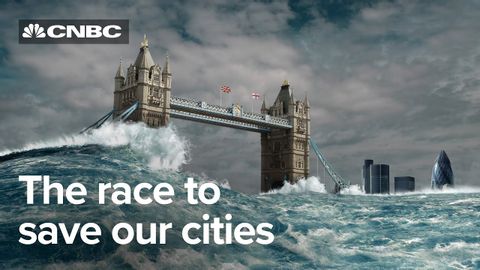城市如何抵禦更多的極端天氣 (How cities are defending themselves against more extreme weather)
Summer 發佈於 2022 年 10 月 30 日  沒有此條件下的單字
沒有此條件下的單字US /ˈstrætədʒi/
・
UK /'strætədʒɪ/
- v.t.著手對付(或處理);擒抱並摔倒
- n. (c./u.)用具;裝備;繩具;處理,接受挑戰
US /ˈɪnfrəˌstrʌktʃɚ/
・
UK /'ɪnfrəstrʌktʃə(r)/
- n. (u.)基礎設施 ; 基礎結構;組織架構;電腦基礎設施
US /ˈɪmˌpækt/
・
UK /'ɪmpækt/
- n.衝擊;碰撞
- v.t./i.撞擊(某人或物);影響;阻生
